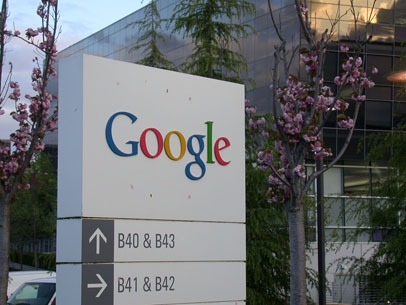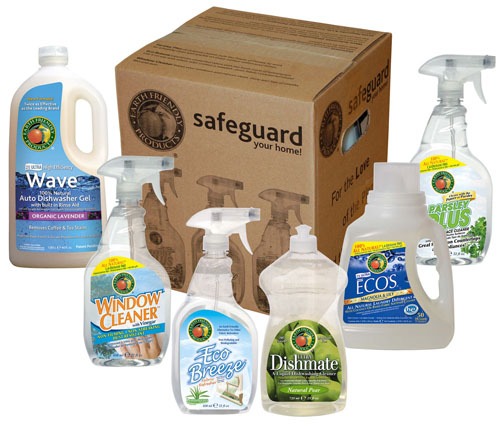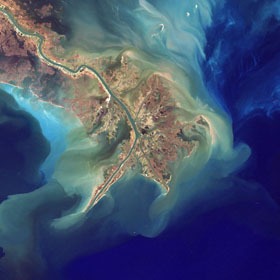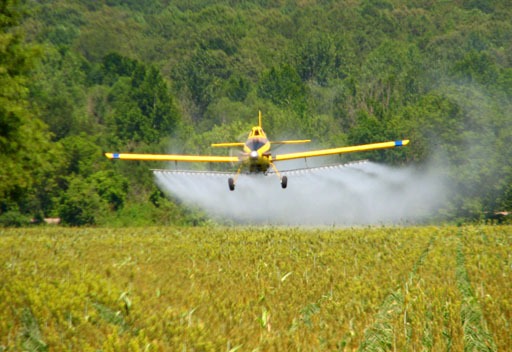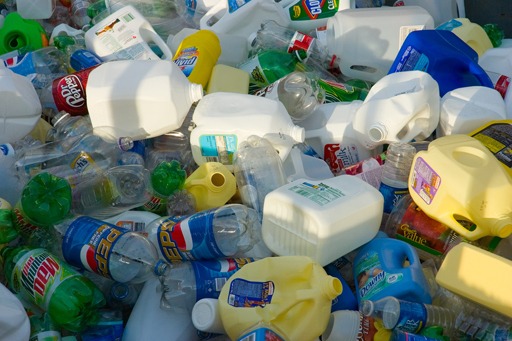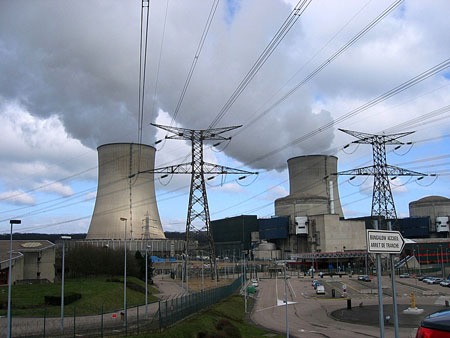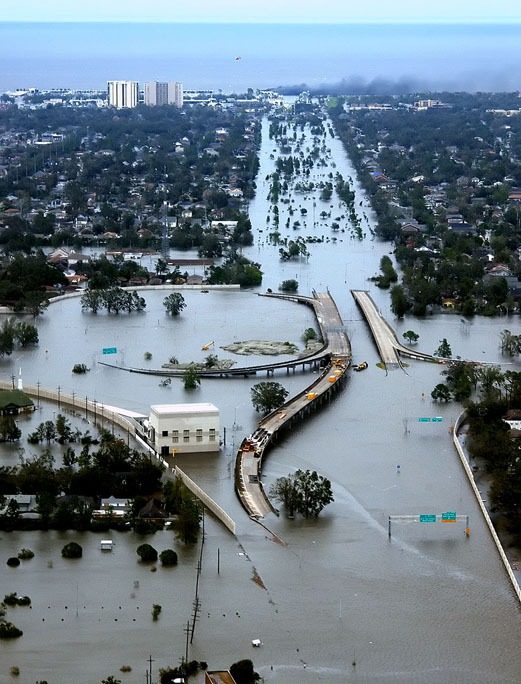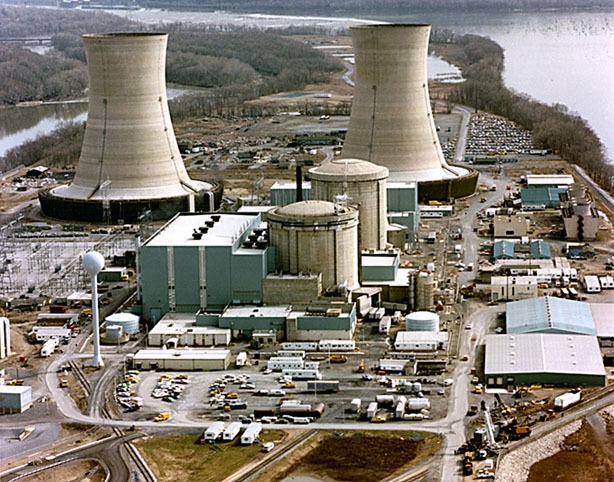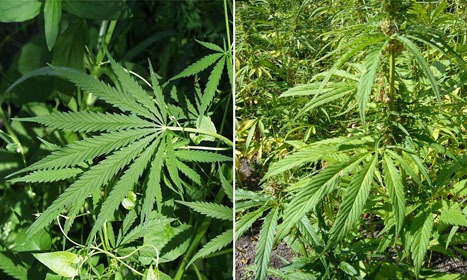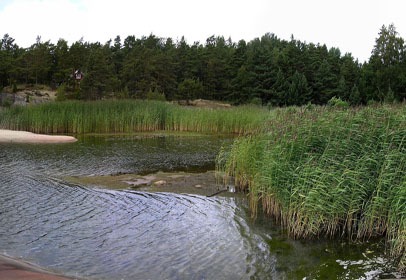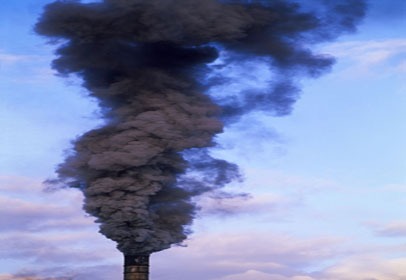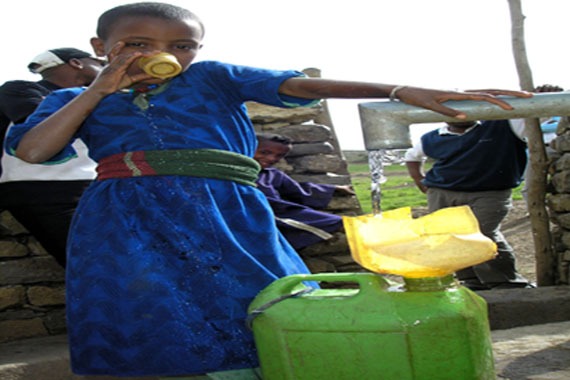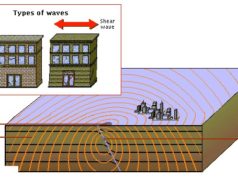Dear EarthTalk: What is the environmental impact of so many people now using sites like Facebook and spending so much time online?– Bob Yearling, Paris, TX
The environmental impact of so much online time really boils down to energy usage, which in turn affects the amount of greenhouse gases we pump into our atmosphere. Google, which has been carbon neutral since 2007, has been a real leader in the building of green data centers, even powering them with renewable energy.
Pic Credit: Jurgen Plasser/Flickr
The environmental impact of so much online time really boils down to energy usage, which in turn affects the amount of greenhouse gases we pump into our atmosphere. For one, each of us can help by limiting computer time (whether surfing the ‘net or not) and shutting them down or putting them into sleep mode when we aren’t using them (this can be automated via the computer’s power management control panel).
Also, when shopping for a new computer, consumers and businesses alike can opt for models certified by the federal government as energy efficient with the Energy Star label. If all computers sold in the U.S. met Energy Star requirements, Americans could pocket $1.8 billion annually in saved energy costs and reduce greenhouse gas emissions by an amount equivalent to taking some two million cars off the road.
Individual responsibility aside, the creation and management of more efficient data centers by the major online hubs—especially as we enter the age of “cloud” computing whereby most of the software, content and services we look to our computers for resides online and is served to us as-needed—is what can have the biggest impact. Google, Facebook, and Amazon.com are already deeply committed to the cloud computing model, with Microsoft, Yahoo and others following suit accordingly.
For its part, Google has been a real leader in the building of green data centers, even powering them with renewable energy. The company recently released environmental footprint scores for several of its data centers. While the energy usage required to run its cloud services (Google Search, Google+, Gmail and YouTube) seems huge in the aggregate—it used 260 megawatt hours to power its data centers in 2010—it boils down to only 7.4 kilowatt hours worth of energy annually per user. Google reports that to provide an individual user with its services for a month uses less energy than leaving a light bulb on for three hours. And because the company has been carbon neutral since 2007, “even that small amount of energy is offset completely, so the carbon footprint of your life on Google is zero.”
In an April 2011 report entitled “How Dirty is your Data?” the non-profit Greenpeace examined energy sources for the 10 largest IT companies involved in cloud computing, finding Apple, Facebook and IBM especially guilty of getting significant amounts of power from coal-fired power plants. (Facebook had come under fire earlier this year when reporters uncovered that the company planned to buy electricity for its brand new eco-friendly data center in Prineville, Oregon—one of the greenest such facilities ever designed and constructed—from a utility that derives most of its power from coal.) Yahoo, Amazon.com and Microsoft scored best in use of renewable alternative energy sources for cloud services.
In the long run, analysts think that the widespread shift to cloud computing will be a great boon to the environment. A report released in September 2011 by Pike Research, “Cloud Computing Energy Efficiency,” predicts that because of the shift to cloud computing and increasing efficiencies, data center power consumption will decrease by 31 percent between 2010 and 2020.
CONTACTS: Energy Star, www.energystar.gov ; Greenpeace, www.greenpeace.org ; Pike Research, www.pikeresearch.com
Dear EarthTalk: I want to use cleaning products that are healthier for the environment, but I worry that baking soda and the like won’t really get my tub and toilet germ-free. Should I continue using bleach products in the bathroom? – Margaret Pierce, Columbia, MO
If you’re interested in cleaning greener, there are many sources of natural cleaning recipes online. Or check out the cleaning products aisle at your local natural food store, where you will find a wide range of cleaning formulations safe for your health and the environment. Pictured: Earth Friendly Products’ “Safeguard Your Home” retail pack.
Pic courtesy: Credit: Earth Friendly Products
When it comes to household cleaning products, most mainstream brands make use of chlorine bleach, ammonia or any number of other chemicals that can wreak havoc on the environment and human health.
Ammonia is a volatile organic compound that can irritate the respiratory system and mucous membranes if inhaled, and can cause chemical burns if spilled on the skin. Bleach contains sodium hypochlorite, which can cause eczema and other skin ailments as well as breathing difficulties if inhaled. And when it reacts with other elements in the environment, toxic “organochlorines” can form, damaging the ozone layer and causing health issues such as immune suppression, reproductive difficulties and even cancer.
Fortunately, growing public concern about the health effects of toxic exposure have led to an “explosion of environmentally friendlier and non-toxic products,” says the health information website, WebMD. “There are many products in this category—from laundry detergents and fabric softeners to multi-surface and floor cleaners, to tile and bathroom cleaners—that are…safer for people and the planet.”
WebMD warns that while many are indeed safer, others are “greenwashed,” meaning they are “marketed as natural while still including suspect chemicals.” How does one know? “Get in the simple practice of looking at product labels to see if the cleaning manufacturer is clearly disclosing all ingredients,” reports WebMD. “If it is not…it could mean the manufacturer is trying to hide a particular suspect ingredient.”
Also, just because a product has an eco-certification printed on its label doesn’t necessarily mean it should be trusted. To make sure, check the Eco-Labels section of Consumer Reports’ Greener Choices website, which gives the low-down on what labels really mean and whether they are backed up by government regulations. Another good resource is the U.S. Department of Health and Human Services’ Household Products Database, which provides ingredient lists for thousands of products on U.S. store shelves.
If you want to play it safe and natural when cleaning your home, WebMD suggests using white distilled vinegar—it kills mold and mildew, eliminates soap scum and sanitizes, all in one fell swoop—to clean windows, tile, cutting boards and countertops. Another effective yet gentle natural cleaner for countertops and bathtubs is baking soda, especially when mixed with a few drops of mild soap. Borax can be called in for tougher stains. If you’re interested in cleaning greener, there are many sources of natural cleaning recipes online. Or check out the cleaning products aisle at your local natural food store, where you will find a wide range of cleaning formulations from the likes of Seventh Generation, Ecover, Green Works and Earth Friendly Products (which sells a “Safeguard Your Home” retail pack that includes one each of a window cleaner, an all-purpose cleaner, a dishwashing liquid, an automatic dishwasher gel, a laundry detergent and a fabric refresher), among many others.
CONTACTS : WebMD, www.webmd.com; Greener Choices, www.greenerchoices.org/eco-labels/eco-home.cfm?redirect=1 ; Household Products Database, hpd.nlm.nih.gov
Dear EarthTalk: What is a “dead zone” in an ocean or other body of water?
– Victor Paine, Tallahassee, FL
Perhaps the most infamous U.S. dead zone is an 8,500 square mile swath of the Gulf of Mexico, not far from where the nutrient-laden Mississippi River, which drains farms up and down the Midwest, lets out.
Pic Credit: Robert Simmon, NASA
So-called dead zones are areas of large bodies of water—typically in the ocean but also occasionally in lakes and even rivers—that do not have enough oxygen to support marine life. The cause of such “hypoxic” (lacking oxygen) conditions is usually eutrophication, an increase in chemical nutrients in the water, leading to excessive blooms of algae that deplete underwater oxygen levels. Nitrogen and phosphorous from agricultural runoff are the primary culprits, but sewage, vehicular and industrial emissions and even natural factors also play a role in the development of dead zones.
Dead zones occur around the world, but primarily near areas where heavy agricultural and industrial activity spill nutrients into the water and compromise its quality accordingly. Some dead zones do occur naturally, but the prevalence of them since the 1970s—when dead zones were detected in Chesapeake Bay off Maryland as well as in Scandinavia’s Kattegat Strait, the mouth of the Baltic Sea, the Black Sea and the northern Adriatic—hints at mankind’s impact. A 2008 study found more than 400 dead zones worldwide, including in South America, China, Japan, southeast Australia and elsewhere.
Perhaps the most infamous U.S. dead zone is an 8,500 square mile swath (about the size of New Jersey) of the Gulf of Mexico, not far from where the nutrient-laden Mississippi River, which drains farms up and down the Midwest, lets out. Besides decimating the region’s once teeming shrimp industry, low oxygen levels in the water there have led to reproductive problems for fish, leading to lack of spawning and low egg counts. Other notable U.S. dead zones today occur off the coasts of Oregon and Virginia.
Fortunately, dead zones are reversible if their causes are reduced or eliminated. For example, a huge dead zone in the Black Sea largely disappeared in the 1990s following the fall of the Soviet Union, after which there was a huge spike in the cost of chemical fertilizers throughout the region. And while this situation was largely unintentional, the lessons learned have not been lost on scientists, policymakers and the United Nations, which has been pushing to reduce industrial emissions in other areas around the globe where dead zones are a problem. To wit, efforts by countries along the Rhine River to reduce sewage and industrial emissions have reduced nitrogen levels in the North Sea’s dead zone by upwards of 35 percent.
In the U.S., dead zones have also been reduced in the Hudson River and San Francisco Bay following clean-up efforts. Hypoxic conditions continue to plague the Gulf of Mexico, however, with matters made worse by pollution unleashed by Hurricane Katrina and the BP oil spill, as well as by a federal push to increase Midwest corn production, which effectively loads even more algae-inducing nutrients into the already overloaded system. The Mississippi Basin/Gulf of Mexico Water Nutrient Task Force, a coalition of federal, state and tribal agencies, has been busy monitoring the dead zone and recommending ways to reduce it since its formation in 1997. But with industrial and agricultural activity throughout Gulf and Midwestern states only increasing—and Mother Nature not making the job any easier—the task force has an uphill battle on its hands to say the least.
CONTACT: Mississippi Basin/Gulf of Mexico Water Nutrient Task Force, www.epa.gov/owow_keep/msbasin
Dear EarthTalk: I am a retailer and have had customers ask whether the plastic bags in wine boxes are BPA free or not. What can I tell them? – Chris Tod, via e-mail
Boxed wines have many environmental advantages over bottled, but some of the plastic bags inside the boxes contain BPA, a synthetic chemical that has been linked to a range of human health problems. Bota Box, pictured here, and many other box wines come in BPA-free packaging. The simple way to know is to read the labels when you’re wine shopping
Credit: Peter Knocke, courtesy Flickr
The short answer is: “It depends.” A fairly recent innovation in wine packaging, the so-called Bag-in-Box (BIB) dispenser makes use of a plastic bag with a nozzle surrounded by a corrugated cardboard box. The whole package sits easily on a shelf and usually features a built-in spout for easy pouring and resealing. The main benefit is that each box can hold about four bottles-worth of wine, and the BIB technology prevents oxidation, keeping the wine fresh for up to six weeks after the seal has been broken initially.
Besides costing less to manufacture than glass bottles, the Bag-in-Box apparatus, invented by Scholle packaging a half century ago, weighs significantly less, stacks more efficiently (meaning more wine can go with each container load) and will not shatter if dropped. As such, they are easier to transport, which keeps costs down and reduces the carbon footprint of the entire distribution process. While U.S. wine buyers traditionally have viewed wine in a box as cheap and unsavory, several American and European wineries are working to turn that view around by putting out award-winning vintages by the box. Eco-conscious yet no less discriminating wine consumers are helping to drive the growing demand for boxed wines in the U.S., which currently command about 10 percent of U.S. supermarket wine sales.
But boxed wine may have an environmental dark side: Some of the plastic bags inside the boxes contain Bisphenol-A (BPA), a synthetic chemical that has been in use for four decades to strengthen plastic food containers and other items but recently has been linked to a range of human health problems. “A growing amount of scientific research has linked BPA exposure to altered development of the brain and behavioral changes, a predisposition to prostate and breast cancer, reproductive harm, diabetes, obesity and cardiovascular disease,” reports the non-profit Natural Resources Defense Council (NRDC).
The bags are made out of #7 plastic, a catchall category typically containing mixed types of plastic (“polycarbonate”), combined for various practical reasons. As more and more research comes to light, many environmentalists and public health advocates are warning consumers to avoid storing any food or drinks in containers made out of #7 plastic, as there is likelihood that BPA could be part of the mix.
Most wineries offering boxed wines make it clear if their plastic bags do not contain BPA. For one, Scholle Packaging, inventors of the BIB system and one of the largest wine box manufacturers, uses only BPA-free #7 plastic in their bags. Perini, Campo Largo, Bota Box and many other box wines come in BPA-free packaging. The simple way to know is to read the labels when you’re wine shopping.
Also, don’t think that by avoiding boxed wine you are necessarily avoiding BPA. Researchers have found that the plastic stoppers so many of us use to cap an unfinished bottle, not to mention the lining of concrete vats used to store wine at many wineries, contain and can leach BPA into your glass. That’s not to say that all wine contains BPA; quite the contrary, in fact, as most bottled wine still never comes into contact with plastic and as such does not carry any BPA-stigma. Regardless, the more you know, the safer you can be—so that the worst thing you get from your wine is a hangover.
CONTACTS: Scholle, www.scholle.com ; NRDC, www.nrdc.org ; Bota Box, www.botabox.com
Dear EarthTalk: I’ve been hearing more and more references to the need to clean up our agricultural practices for reasons pertaining to health, food quality, even global warming. What are the major environmental issues today associated with agriculture? — Tony Grayson, Newark, NJ
With the vast majority of the world’s farms now relying on synthetic chemicals to grow crops and petroleum-derived fuels to drive the engines of production, modern agriculture has become overwhelmingly toxic to the atmosphere and is hastening global warming.
Pictured: a crop duster in Tennessee.
Credit: Roger Smith, courtesy Flickr
What amazes many environmental advocates to this day is how the widespread adoption of synthetic chemical pesticides, herbicides and fertilizers for use in agriculture was dubbed the “Green Revolution,” when in fact this post-World War II paradigm shift in the way we produce food has wreaked untold havoc on the environment, food quality and human health.
Agricultural output has certainly increased as a result of these changes, but with the vast majority of the world’s farms now relying on petroleum-derived synthetic chemicals to grow crops and petroleum-derived fuels to drive the engines of production—modern agriculture has become overwhelmingly toxic to the atmosphere and is hastening global warming. The Intergovernmental Panel on Climate Change (IPCC) reports that agricultural land use contributes 12 percent of global greenhouse gas emissions; here in the U.S. almost 20 percent of our carbon dioxide emissions come from agricultural sources.
Intensive use of chemicals isn’t good for our nutrition intake, either. Overworked, depleted agricultural soils generate fruits and vegetables with fewer nutrients and minerals than those produced by farmers decades ago. And much of the food we eat is laced with chemicals that end up in our bloodstreams.
Beyond its effect on the food we put in our bodies, modern agriculture generates large amounts of nitrogen, phosphorous and other fertilizers running off into our streams, rivers and oceans, compromising not only the quality of our drinking water and the health of riparian ecosystems, but also causing those huge oxygen-depleted ocean dead zones we hear about in coastal areas such as the Gulf of Mexico.
Yet another issue with modern farming is the amount of animal waste generated and concentrated in small areas, which creates unsanitary and potentially dangerous conditions for the animals and humans alike. And the widespread use of antibiotics on farm animals to keep disease in check results in the development of stronger strains of bacteria that resist the antibiotics used by humans to ward off infection and sickness.
Also, many worry about the potential impacts of the widespread use of genetic engineering, whereby genes in plants, animals and microorganisms are manipulated to select for specific traits. These genetically modified organisms, reports Greenpeace, “can spread through nature and interbreed with natural organisms,” thus contaminating the natural environment in unforeseeable and uncontrollable ways.
The good news is that rapidly increasing consumer demand for healthier food is forcing agribusiness to see the wisdom of moving away from business-as-usual. Organic farming, which eschews chemical fertilizers and pesticides in favor of more natural choices, holds considerable promise for greening up our agricultural systems. According to the U.S. Department of Agriculture, organic cropland acreage averaged 15 percent increases between 2002 and 2008, although certified organic cropland and pasture accounted for only about 0.6 percent of U.S. total farmland in 2008. So we still have along way to go.
CONTACTS: IPCC, www.ipcc.ch ; USDA, www.ers.usda.gov/Data/Organic
Dear EarthTalk: Why can’t plastics of all types, instead of being initially sorted, simply be melted together to be separated later? It must be a monumental and error-prone task to separate truckloads of plastics. – L. Schand, via e-mail
According to the Colorado-based EcoCycle, the use of disposable packaging - especially plastic - has increased by more than 10,000 percent over the past 50 years.
Pictured: plastics headed for sorting and recycling
Credit: Dan LaMee, courtesy Flickr
The reason plastics aren’t typically melted together and then separated later is a matter of both physics and economics. When any of the seven common types of plastic resins are melted together, they tend to separate and then set in layers. The resulting blended plastic is structurally weak and difficult to manipulate. While the layered plastic could in theory be melted again and separated into its constituent resins, the energy inputs required to do so would make such a process cost prohibitive.
As a result, recycling facilities sort their plastics first and then melt them down only with other items made of the same type of resin. While this process is labor-intensive, the recycling numbers on the bottom of many plastic items make for quicker sorting. Many recycling operations are not only reducing sizable amounts of waste from going into landfills but are also profitable if managed correctly.
Manufacturers of plastic items choose specific resins for different applications. Recycling like items together means the reclaimed polymer can be used to create new items just like their virgin plastic forebears. The seven common types of plastic are: #1 Polyethylene terephthalate (PET or PETE); #2 High-density polyethylene (HDPE); #3 Polyvinyl chloride (PVC); #4 Low-density polyethylene (LDPE); #5 Polypropylene (PP); #6 Polystyrene (PS); and #7 Other/Mixed (O). One complicating factor is trying to recycle unmarked plastics and those embossed with a #7 (representing mixed resins, also known as polycarbonate). According to Earth911, a leading online source for finding recyclers for specific types of items across the United States, in some cases #7 plastics can be “down-cycled” into non-renewable resin; in other cases recycling operations just send their unmarked and #7 plastics into local landfills.
But even though recycling operations have developed relatively efficient systems for generating reclaimed resins, many environmentalists recommend that consumers still avoid plastics as much as possible. “Simply recycling these products does not negate the environmental damage done when the resource is extracted or when the product is manufactured,” reports EcoCycle, a Colorado-based non-profit recycler with an international reputation as an innovator in resource conservation. The group adds that over the past half century, the use of disposable packaging—especially plastic—has increased by more than 10,000 percent.
Along these lines, products (or packaging) made out of reusable metal, glass or even wood are preferable to equivalent items made from plastic. For starters, an item of metal, glass or wood can be re-used by someone else or recycled much more efficiently than plastic when it does reach the end of its useful life to you. Wood products and other items crafted out of plant material—even so-called “polylactic acid (PLA) plastic” made from plant-based agricultural wastes—can be composted along with your yard waste and food scraps, either in your backyard or, if your town or city offers it, through your municipal collection system. Happy reducing, reusing and recycling!
CONTACTS: Earth911, www.earth911.com ; EcoCycle, www.ecocycle.org
Dear EarthTalk: Why don’t we reprocess and re-use our nuclear waste like France does? Would it be possible for us to start doing so? – Albert Jukowsky, Silver Spring, MD
Reprocessing nuclear waste — practiced in France and several other countries but not in the U.S. where it was invented — involves breaking down spent nuclear fuel to recover material for use in new fuels. Proponents say it reduces the amount of nuclear waste, resulting in less highly radioactive material that needs to be stored safely. Pictured: France’s Cattenom nuclear power station.
Credit: Toucanradio, courtesy Flickr
Reprocessing nuclear waste to extract more energy from it, while expensive and controversial, is indeed to this day still practiced in France, the UK, Russia, India and Japan—but not in the United States, where it was invented. The process involves breaking down spent nuclear fuel chemically and recovering fissionable material for use in new fuels. Proponents tout the benefit of reducing the amount of nuclear waste, resulting in less highly radioactive material that needs to be stored safely.
Nuclear reprocessing was first developed in the U.S. as part of the World War II-era Manhattan Project to create the first atomic bomb. After the war, the embryonic nuclear power industry began work to reprocess its waste on a large scale to extend the useful life of uranium, a scarce resource at the time. But commercial reprocessing attempts faltered due to technical, economic and regulatory problems. Anti-nuclear sentiment and the fear of nuclear proliferation in the 1970s led President Jimmy Carter to terminate federal support for further development of commercial reprocessing. The military did continue to reprocess nuclear waste for defense purposes, though, until the collapse of the Soviet Union and the end of the Cold War made continuous ramping up of our nuclear arsenal unnecessary.
More recently, George W. Bush pushed a plan, the Global Nuclear Energy Project (GNEP), to promote the use of nuclear power and subsidize the development of a new generation of “proliferation-resistant” nuclear reprocessing technologies that could be rolled out to the commercial nuclear energy sector. Federal scientists came up with promising spins on reprocessing nuclear fuel while minimizing the resulting waste. But in June of 2009 the Obama administration cancelled GNEP, citing cost concerns.
Proponents of nuclear power—and of reprocessing in particular—were far from pleased with GNEP’s axing, especially in light of Obama’s earlier decision to close Yucca Mountain as the U.S.’s future nuclear waste repository. “GNEP may have gone away, but the need to recycle spent fuel in this country is more important than ever because of the government’s stupid decision to close Yucca Mountain,” said Danny Black of the Southern Carolina Alliance, a regional economic development group, on the Ecopolitology blog. “Without Yucca Mountain, the pressure is on the industry to do more with recycling.”
But a 2007 report by the nonprofit Institute for Energy and Environmental Research (IEER) would seem to justify Obama’s decision. IEER found that nuclear reprocessing would actually increase our volume of nuclear waste six fold. IEER also reported that France, which runs the world’s most efficient reprocessing operation, spends about two cents per kilowatt hour more for electricity generated from reprocessed nuclear fuel compared to that generated from fresh fuel. IEEE further reports that the costs to build the breeder plants needed to convert spent nukes into usable fuel would “create intolerable costs and risks.”
For now, U.S. nuclear plants will continue to store waste on site, with spent rods cooled in pools of water for upwards of a year and then moved into thick steel and concrete caskets. While proliferation and terrorism have long been risks associated with hosting nuclear plants on American soil, recent events in Japan underscores that even Mother Nature poses a threat. As such, advocates of reprocessing probably stand little chance of reviving plans in a political climate now so hostile to nuclear development.
CONTACTS: Ecopolitology, www.ecopolitology.org ; IEER, www.ieer.org.
Dear EarthTalk: I understand that fast-food giant YUM! Brands, owner of KFC, is under fire by Greenpeace and others for rainforest destruction. What’s the story? — Betsy Barnard, Wellesley, MA
YUM! Brands, which operates 38,000 fast food restaurants in 110 countries (including KFC, Pizza Hut, Taco Bell, WingStreet, A&W and Long John Silver’s), continues to ignore calls to stop sourcing palm oil, paper and other goods from suppliers notorious for destroying tropical rainforests in Indonesia and elsewhere. Indonesia’s tropical rainforests are home to orangutans, tigers, elephants, clouded leopards and dozens of other endangered plants and animals.
Credit: Marufish, courtesy Flickr
YUM! Brands, which operates 38,000 fast food restaurants in 110 countries (including not only KFC but also Pizza Hut, Taco Bell, WingStreet, A&W and Long John Silver’s), has come under fire of late from Greenpeace and other rainforest advocacy groups for sourcing palm oil, paper and other goods from suppliers notorious for destroying tropical rainforests in Indonesia and elsewhere. While McDonald’s and Burger King have worked in recent years to cut their ties with palm oil and logging companies linked to rainforest destruction, YUM! continues to ignore calls to source their resources more responsibly.
Indonesia’s tropical rainforests are home to orangutans, tigers, elephants, clouded leopards and dozens of other endangered plants and animals. Environmentalists report that 40 percent of Indonesia’s rainforests have been logged over in the last half-century, mostly to clear the way for palm oil plantations. The cleared timber is sold at huge profits for paper and pulp, while the palm oil brings in continuous revenue for multinational corporations despite denuding lands once rich in biodiversity.
Tropical rainforests also sequester significant amounts of carbon dioxide (CO2) in their growing woody biomass; chopping them down only accelerates the rate of global warming by allowing more CO2 to escape into the atmosphere where it contributes to the greenhouse effect. Despite a partial moratorium on rainforest destruction announced by the Indonesian government in May 2011, analysts believe that nearly half of the country’s remaining tropical rainforests will be cleared within two decades.
Over-exploitation of natural resources—and deforestation in particular—is a huge obstacle to Indonesia’s growth. According to the Rajawali Institute for Asia at the Harvard Kennedy School of Government, by eliminating its natural capital for negligible gains, Indonesia lost $150 billion in future revenues between 1990 and 2007, wiping out one-third of the country’s national savings in the process.
There are “major economic risks for Southeast Asia’s agriculture and timber sectors if they don’t take prompt action to conserve their forests,” reports Glenn Hurowitz, senior fellow at the Center for International Policy. “Global consumers are increasingly demanding deforestation-free products,” he says, adding that Nestle, McDonald’s, Unilever and others have pledged to obtain their palm oil from sources certified “sustainable” by the Roundtable on Sustainable Palm Oil.
YUM! Brands is not the only offender. Greenpeace has also targeted Mattel toys for supporting suppliers that contribute to Indonesian deforestation. And two Michigan girl scouts were shocked to find out the cookies they were selling contained palm oil obtained from deforested land in Indonesia. They spread the word to fellow girl scouts across the country, thousands of whom have stopped selling cookies as a result.
Concerned consumers should write the company a letter asking them to stop using products derived from deforested rainforest lands. Greenpeace makes it easy by hosting an online form letter that sympathizers can sign onto and the group will take care of delivering your message directly to YUM! executives.
CONTACTS : YUM! Brands, www.yum.com; Center for International Policy, www.ciponline.org; Roundtable on Sustainable Palm Oil, www.rspo.org; Greenpeace Form Letter to YUM!, https://secure3.convio.net/gpeace/site/Advocacy?cmd=display&;page=UserAction&id=689.
Dear EarthTalk: Coastal areas here in the U.S. have taken a real beating in recent years due to natural disasters that many would argue are due to changing climate. What’s being done to safeguard these communities for when, say, the next Katrina hits? – Helen Kelman, Troy, NY
Even before the effects of global warming started to kick in, the vast majority of America’s coastlines were reeling from threats including habitat destruction, sewage outflows and industrial pollution. Pictured: Flooded area of northwest New Orleans and Metairie, Louisiana in the wake of Hurricane Katrina.
Credit: AP Photo/U.S. Coast Guard, Petty Officer 2nd Class Kyle Niemi
Coastal regions in the U.S. are more popular—and more heavily populated—than ever. But even before the effects of global warming started to kick in, reports the non-profit World Resources Institute, more than half of the coastal ecosystems of the world—including the vast majority of America’s coastlines—were reeling from threats including habitat destruction, sewage outflows, industrial pollution and the impacts of non-native species introductions.
Recently, though, a string of unprecedented natural disasters, including hurricanes like Katrina and tsunamis like that which devastated Japan, has made many people re-think the wisdom of moving to the coast. And the federal government has begun to advocate that coastal communities adopt tougher building codes and zoning ordinances, but there is little public officials can do to deter people from being drawn in by the lure of the coast—even as ice caps melt, sea levels rise and storms brew fiercer and fiercer.
Critics say the federal government should be doing more to protect coastal areas which, besides being attractive to home buyers, are among the richest storehouses of biodiversity we have. But traditionally, such responsibilities have fallen to local and regional officials. In the case of New Orleans following 2005’s disastrous hurricane season, the Louisiana state legislature formed the Coastal Protection and Restoration Authority (CPRA) to protect, conserve, restore and enhance coastal wetlands, barrier shorelines and reefs so as to protect the city from the impacts of future hurricanes. The U.S. Army Corps of Engineers is now working with Louisiana authorities to implement CPRA’s master plan. Of course, restoring wetlands and other natural buffers that have been decimated by a half century of development and overpopulation is no small task. It’s unfortunate that such plans only come to pass after a disaster of huge magnitude takes place, instead of beforehand.
In response to such concerns, green groups, consumer advocates, taxpayer associations, insurance companies and other organizations have come together as Americans for Smart Natural Catastrophe Policy (also known as SmarterSafer.org). Coalition members, which include the Sierra Club, Liberty Mutual Group, Americans for Tax Reform, the United Services Automobile Association and others, have aligned behind shared goals of restoring coastal wetlands and increasing protection for barrier islands while influencing local officials to make smarter decisions about where to allow development in light of the expected effects of climate change and other problems.
The coalition applauds the vision and work of CPRA in Louisiana, and would like to see such planning take place in other U.S. coastal regions as well. Furthermore, it is critical of the federal government for pumping funds into the National Flood Insurance Program, which it says only spreads the costs of natural disasters around instead of taking measures that would prevent damage in the first place. Such approaches, the coalition argues, “provide a perverse incentive to encourage development in risky coastal areas” and “expose taxpayers, including those who do not live in at-risk coastal areas, to significant financial costs.”
CONTACTS: CPRA, www.lacpra.org ; Smartersafer.org, www.smartersafer.org .
Dear EarthTalk: Radioactive rain recently fell in Massachusetts, likely due to Japan’s nuclear mess. Given the threats of radiation, wouldn’t it be madness now to continue with nuclear power? How can President Obama include nukes as part of a “clean energy” agenda? – Bill Mason, Hartford, CT
The non-profit organization, Beyond Nuclear, calls nuclear power “counterproductive to efforts to address climate change effectively and in time” and says that funding diverted to nuclear deprives real climate change solutions, like solar, wind and geothermal energy, of essential resources. Pictured: The Three Mile Island nuclear generating station, circa 1979 near the time it suffered a partial meltdown.
Credit: U.S. Department of Energy photo
In the wake of the Fukushima disaster in Japan, countries around the world that were growing more bullish on nuclear power are now reconsidering their future energy investments. Germany has shut down seven of its oldest nuclear reactors and is conducting safety studies on the remaining facilities; those that don’t make the grade could be closed permanently. Meanwhile, in earthquake-prone Chile some 2,000 demonstrators marched through the capital to protest their government’s enthusiasm for nuclear power. And China, the world’s fastest growing nuclear energy developer, has suspended the approval process on 50 nuclear power plants already on the drawing board, and begun inspections on 13 existing plants.
But despite calls to shutter the U.S. nuclear program, President Obama remains committed to the industry despite his stated opposition to it pre-election. In December 2007, Obama told reporters at a campaign stop in Iowa: “Until we can make certain that nuclear power plants are safe…I don’t think that’s the best option,” adding that he was much more keen on solar, wind, biodiesel and other alternative fuels.
According to investigative journalist Karl Grossman, Obama changed his tune on nuclear as soon as he took office, “talking about ‘safe, clean nuclear power’ and push[ing] for multi-billion dollar taxpayer subsidies for the construction of new nuclear plants.” Right away, Grossman says, Obama brought in nuclear advocate Steven Chu as energy secretary, and two White House aides that had been “deeply involved with…the utility operating more nuclear power plants than any other in the U.S., Exelon.”
Undeterred by the Japanese nuclear disaster, Obama pledged just two weeks following the initial explosions at the Fukushima Dai-ichi facility that nuclear power should be revived in the U.S., as it provides “electricity without adding carbon dioxide to the atmosphere.” He added that he requested a comprehensive safety review by the Nuclear Regulatory Commission to ensure the safety of existing facilities. “We’ll incorporate those conclusions and lessons from Japan in designing and building the next generation of [nuclear] plants,” Obama added.
But just because nuclear energy isn’t a fossil fuel doesn’t make it green, given the ongoing risk of radioactivity. Also, reports the non-profit Beyond Nuclear, “Nuclear power is counterproductive to efforts to address climate change effectively and in time…funding diverted to new nuclear power plants deprives real climate change solutions, like solar, wind and geothermal energy, of essential resources.”
Indeed, if policymakers were able to divert the hundreds of millions of dollars in subsidies to the U.S. nuclear industry every year to solar, wind and geothermal developers, there is no telling how quickly we could innovate our way to sustainable non-polluting energy independence and put the specter of nuclear power that much further in our rearview mirror. But it looks like as long as Obama remains in office, nuclear will remain a big part of our near term energy future, damn the torpedoes.
CONTACTS: Karl Grossman, karlgrossman.blogspot.com; Nuclear Regulatory Commission, www.nrc.gov ; Beyond Nuclear, www.beyondnuclear.org
Dear EarthTalk: With all the talk of the need for safe, renewable energy sources, isn’t the elephant in the room really that we should use far less energy than we do? Wouldn’t more rules about conservation (like not leaving commercial building lights on all night) make the challenges easier? – Jennifer B., New York, NY
Earth Hour 2011 saw the participation of millions of individuals in 135 countries who turned their lights off for one hour to make a statement about the need to conserve energy to fight climate change. Organizers expect the 2012 event (March 31 at 8:30 p.m., wherever you live) to be even bigger.
Credit: Reway2007, courtesy Flickr.
In short, yes: Scaling back our energy consumption significantly, whether voluntarily or as a result of laws and regulations, would go a long way toward achieving our pollution reduction and air and water quality goals. But Americans—and to a lesser extent those in many other developed nations—have never been very good at using less of anything, let alone the energy that makes everything in our whiz-bang modern world possible. That said, conservation is going to play an increasingly important role in all of our lives as we struggle to reduce our collective carbon footprints in a quickly warming world.
President Obama has repeatedly highlighted the need for greater conservation efforts when it comes to shoring up our existing and future energy reserves and reducing our dependence on foreign sources of oil. The American Recovery and Reinvestment Act of 2009 set aside upwards of $3 billion to bolster efforts across the country to weatherize existing buildings in order to conserve energy.
Grants to local communities for such projects, along with calls for voluntary reductions in energy consumption, are part of the plan. The White House is also betting on technology by subsidizing various initiatives aimed at reducing energy use and making our existing power network more efficient overall. Research has shown that investments in energy efficiency that promote conservation are cheaper and provide quicker returns than building new, cleaner power plants. A recent study released by Lawrence Berkeley National Laboratory predicts annual spending on energy efficiency and conservation to quadruple to as much as $12 billion a year by 2020.
As for what you can do to promote conservation, lead by example—and you’ll see your energy bills go down, too. Turn lights, computers and TVs off when you are done using them. If you’re remodeling or building a new home, occupancy sensors that turn lights on and off as people enter or leave rooms is a good investment, as is making use of natural light in more overt ways to obviate the need for artificial lighting in daylight hours. Also, purchasing appliances rated for good energy efficiency under the federal government’s Energy Star program will save energy. Likewise, driving a hybrid or electric vehicle, or foregoing a car altogether in favor of public transit, biking or walking, is a great way to conserve energy.
One way that awareness about the importance of energy conservation is being promoted around the world is through “Earth Hour,” which began in 2007 when two million individuals and 2,000 businesses in Sydney, Australia turned their lights off for one hour to make a statement about the need to fight climate change. Within a year, the concept had spread to more than 50 million participants in 35 countries. In 2011 Earth Hour drew participants in 135 countries; organizers expect the 2012 event (March 31 at 8:30 p.m., wherever you live) to be even bigger. Similar but unique “Lights Out” movements in San Francisco and other American cities will align with Earth Hour as well.
CONTACTS : Energy Star, www.energystar.gov ; Earth Hour, www.earthhour.org ; Lawrence Berkeley National Laboratory, www.lbl.gov ; Lights Out San Francisco, www.lightsoutsf.org
Dear EarthTalk: I heard someone say that legalizing pot—as Californians considered doing last year—would benefit the environment. How would that be? – William T., Portland, OR
Legalizing pot (left-hand image), some say, would eliminate many negative environmental impacts associated with clandestine growing and illegal smuggling. It would also likely open the door for the legalization of hemp (right-hand image), a relative of the cannabis plant that can’t get you high but could help us sustainably meet a good amount of our fiber and fuel needs.
Credit: Wikipedia.
It is well known that legalizing pot could have great economic benefits in California and elsewhere by allowing the government to tax it (like it now does on liquor and cigarettes), by ending expensive and ongoing operations to eradicate it, and by keeping millions of otherwise innocent and non-violent marijuana offenders out of already overburdened federal and state prisons. But what you might not know is that legalizing pot could also pay environmental dividends as well.
Nikki Gloudeman, a senior fellow at Mother Jones magazine, reports on the change.org website that the current system of growing pot—surreptitious growers illegally colonizing remote forest lands and moving pesticides, waste and irrigation tubes into otherwise pristine ecosystems—is nothing short of a toxic scourge. Legalizing pot, she says, would clean things up substantially, as the growing would both eliminate the strain on public lands and meet higher standards for the use and disposal of toxic substances.
Legalization would also reduce the environmental impacts of smuggling across the U.S./Mexico border, says Gloudeman: “Cartels routinely use generators, diesel storage tanks and animal poison to preserve their cache, when the border area is surrounded by more than 4 million acres of sensitive federal wilderness.”
Also, legalizing pot would move its production out into the open, literally, meaning that growers would no longer need to rack up huge energy costs to keep their illegal indoor growing operations lit up by artificial light. This means that the energy consumption and carbon footprint of marijuana growers would go way down, as the light the plants need for photosynthesis could be provided more naturally by the sun.
Yet another green benefit of legalizing marijuana would be an end to the destructive eradication efforts employed by law enforcement at bust sites, where the crop and the land they are rooted in are sometimes subjected to harsh chemical herbicides for expedited removal.
The legalization of pot in the U.S. would also likely open the door to the legal production of hemp, a variety of the same Cannabis plant that contains much lower amounts of the psychoactive drug, THC. Proponents say hemp could meet an increasingly larger percentage of our domestic fiber and fuel needs. Cannabis, the plant from which marijuana and hemp is derived, grows quickly without the need for excessive amounts of fertilizer or pesticide (it’s a “weed” after all) and absorbs carbon dioxide like any plant engaged in photosynthesis. The fiber and fuel derived from hemp would be carbon neutral and as such wouldn’t contribute to global warming—and in fact could help mitigate rising temperatures by replacing chemical-intensive crops like cotton and imported fossil fuels like oil and gas.
Of course, one might argue that the best thing for the environment would be to stop growing cannabis altogether. “But let’s be real: That’s never going to happen,” says Gloudeman. “In light of that, the next best bet is to make it legal.”
CONTACTS: Change.org, www.change.org ; Drug Policy Alliance, www.drugpolicy.org .
Dear EarthTalk: Why don’t cleaning products have to list their ingredients, and are these products tested for what they might do to your health? – Patricia Greenville, Bethel, CT
Credit: Digital Vision, courtesy Thinkstock
The government only requires companies to list “chemicals of known concern” on their labels. And the operative word is “known,” because the government has no idea whether most of the chemicals used in everyday cleaning products are safe because it doesn’t test them, and it doesn’t require manufacturers to test them either.
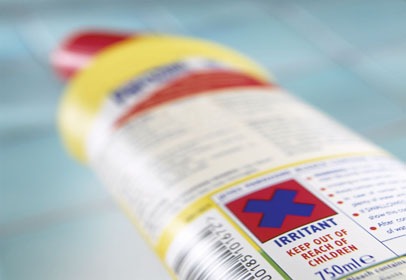
Since cleaning products aren’t food, beverages or drugs meant to be ingested, they aren’t regulated, per se, by the U.S. Food and Drug Administration. However, makers are required by the U.S. Environmental Protection Agency (EPA) to list ingredients that are active disinfectants or potentially harmful. Otherwise, they usually keep their other ingredients secret, presumably so competitors can’t copy their formulas.
But consumer advocate Sloan Barnett, author of Green Goes with Everything, doesn’t give manufacturers the benefit of that doubt. “Call me suspicious, but I honestly don’t think it’s because the recipe is top secret,” she says. “If it was, there wouldn’t be so many competing products with identical ingredients.” Barnett thinks manufacturers don’t want to scare off consumers by disclosing how many potentially harmful chemicals are flying under the EPA’s radar in their products.
“The government only requires companies to list ‘chemicals of known concern’ on their labels. The key word here is ‘known’,” she says. “The fact is that the government has no idea whether most of the chemicals used in everyday cleaning products are safe because it doesn’t test them, and it doesn’t require manufacturers to test them either.”
She adds that the EPA, under the terms of 1976’s Toxic Substances Control Act, “can’t require chemical companies to prove the safety of their products unless the agency itself can show that the product poses a health risk—which the EPA does not have the resources to do since, according to one estimate, it receives some two thousand new applications for approval every year.” She cites a recent study by the non-profit Environmental Working Group, which found that the EPA approved most applications within three weeks even though more than half provided no information on toxicity whatsoever.
Regardless, consumers should be familiar with what warning labels are on cleaning products. “All household cleaners that contain known hazardous chemicals must carry a warning label that spells out potential risks, along with precautionary steps and first-aid instructions,” reports Consumer Reports’ Greener Choices website.
Some manufacturers are beginning to be more transparent about their ingredients. The Clorox Company, for example, one of the largest manufacturers of cleaning products, now publishes full lists of the ingredients for all of its brands on its corporate responsibility website, CloroxCSR.com. Many praise Clorox for doing so; others argue that, whether or not ingredients are disclosed, the company—like many others—is still in the business of making products that pose health and environmental hazards.
Generally speaking, if you’re looking for safer alternatives, browse the cleaning products sections of natural foods markets such as Whole Foods, which are populated with lesser-known but more green-friendly brands. For do-it-yourselfers, the Greener Choices website also lists recipes for eco- and health-friendly homemade household cleaners using ingredients like baking soda, borax, lemon juice and vinegar.
CONTACTS: Greener Choices, www.greenerchoices.org ; Clorox, www.cloroxcsr.com
Dear EarthTalk: We have an invasion of phragmites in the wetlands bordering our neighborhood. I understand they are a non-native plant that, if left unchecked, will overrun the whole ecosystem. How does one remedy this situation in an eco-friendly way? – Jeff Willets, via e-mail
Credit: Jan-Eric Nyström, Courtesy Wikipedia
Fast-spreading phragmites, or common reeds, can present a major problem in freshwater and tidal wetland habitats, crowding out other plants that wildlife depend upon and eliminating the puddles and small pools of water that are essential to fish, amphibians, turtles and waterfowl.
Pictured: A previously sandy beach overrun with phragmites.
Fast-growing, fast-spreading phragmites (Phragmites australis), which most of us know as common reeds, can present a major problem in freshwater and tidal wetland habitats. This is especially so in eastern U.S. states along the Atlantic coast, but also increasingly across much of the Midwest and parts of the Pacific Northwest and southern Canada. While some sub-species of the plant may actually be native to our continent, it is non-native varieties that run rampant across North American wetlands today, presenting a formidable threat to biodiversity, crowding out other plants that wildlife depend upon for food and shelter.
“In the ecosystem it invades, its dense underground rhizome system actually raises the topography, eliminating the puddles and small pools of water so essential to fish, amphibians, turtles and waterfowl,” reports Mike McGrath of Gardens Alive, a leading purveyor of natural garden and agricultural products. Phragmites are also allelopathic, he says, meaning that they secrete a compound which interferes with the growth of many other plants. Phragmites are also the bane of many a waterfront homeowner whose views are blocked by fast spreading, tough-to-eradicate reed communities growing between 12 and 15 feet high.
Plant biologists believe that non-native phragmites have gotten out of control in the U.S. because of their opportunistic nature coupled with the steady stream of freshly disturbed formerly natural terrain being made available to colonize. “When areas are drained for building, dredging takes place to save a beach, or other things are done to previously natural areas, it becomes more dominant than the non-aggressive native sub-species and other coastal plants,” says McGrath. And that’s why they call them weeds.
According to Washington State’s Noxious Weed Control Board, getting rid of phragmites without resorting to hazardous chemicals (that will kill other plants and poison the surrounding environment instead of helping it) takes persistence, patience and proper timing: “If cut just before the end of July, most of the food reserves produced that season are removed with the aerial portion of the plant, reducing the plant’s vigor.” The board stresses that such a regime “may eliminate a colony if carried out annually for several years” and that “care must be taken to remove cut shoots to prevent re-growth.”
“Repeated cutting of the green growth above ground will eventually exhaust the root system,” McGrath chimes in. “If the plant is growing in water and you can cut it below the water line and keep the cut area submerged, the root system will suffocate within days…as the plant relies on its stems, living or dead, to convey oxygen down to the roots.”
Yet another option is to graze it out. The New Jersey Division of Fish & Wildlife used sheep, goats and even cattle to control phragmites there, although to be successful the animals needed to graze over affected areas repeatedly, and others have not had as much success with eradication via grazing. Whatever method you choose, hunker down for the long haul and keep up the good fight. You are doing the right thing.
CONTACTS: Gardens Alive, www.gardensalive.com ; Washington State Noxious Weed Control Board, www.nwcb.wa.gov ; New Jersey Division of Fish & Wildlife, www.state.nj.us/dep/fgw
Dear EarthTalk: Is air quality in the United States improving or getting worse? Is it cleaner in some parts of the country than in others? – K. Gould, Sherman Oaks, CA
Air quality across the United States has improved dramatically since 1970 when Congress passed the Clean Air Act. Nonetheless, some 175 million Americans - 58 percent of the population - still live in places where pollution levels can cause breathing difficulties or worse.
Credit: Comstock, courtesy Thinkstock
Air quality across the United States has improved dramatically since 1970 when Congress passed the Clean Air Act in response to growing pollution problems and fouled air from coast to coast. According to data from the U.S. Environmental Protection Agency (EPA), levels of all major air pollution contaminants (ozone, nitrogen oxides, carbon monoxide, sulfur dioxide, particulate matter and lead) are down significantly since 1970; carbon monoxide levels alone dropped by more than 70 percent.
And that’s good news for everyone. A 2009 study published in the New England Journal of Medicine found that efforts to reduce fine particle pollution from automobiles, diesel engines, steel mills and coal-fired power plants have added between four and eight months to the average American’s life expectancy in recent years. Overall, Americans are living some two and three-quarter years longer than during the 1980s. Changes in smoking habits and improved socioeconomic conditions are the biggest reasons why, but cleaner air is also a big factor. “It’s stunning that the air pollution effect seems to be as robust as it is,” Arden Pope, the Brigham Young University epidemiologist who led the study, told reporters.
Pope and his team analyzed life expectancy, economic, demographic and pollution data from 51 metropolitan areas, and found that when fine-particle air pollution dropped by 10 micrograms per cubic meter, life expectancy rose by 31 weeks—such as in Akron, Ohio and Philadelphia. Where fine particle counts dropped even more—by 13 to 14 micrograms, such as in New York City, Buffalo and Pittsburgh—people lived some 43 weeks longer on average.
But according to the American Lung Association (ALA), even though air quality around the country is improving overall, some 175 million Americans—58 percent of the population—still live in places where pollution levels can cause breathing difficulties or worse. The group’s “State of the Air: 2010” report looks at levels of ozone and particle pollution found in monitoring sites across the United States in 2006, 2007, and 2008, and compares them to previous periods.
The biggest improvement was found in year-round (annual) particulate levels, which the ALA attributes to recent efforts to clean up major industrial air pollution sources. “However, the continuing problem demonstrates that more remains to be done, especially in cleaning up coal-fired power plants and existing diesel engines.” the group reports. ALA also found, by overlaying census data with pollution maps, that Americans with the lowest incomes face higher risks of harm from air pollution, underscoring what environmental justice advocates have been saying for years.
As for how to protect ourselves from still problematic air pollution, ALA recommends checking air quality forecasts and avoiding exercising or working outdoors when unhealthy air is present. The federal government’s AirNow website provides daily air quality updates for more than 300 cities across the U.S., as well as links to more detailed state and local air quality web sites. And if air quality problems in your area continue to be bothersome, consider picking up and moving. Fargo, North Dakota or Lincoln, Nebraska, anyone? According to ALA’s “State of the Air: 2010” report, these two cities rank among the cleanest in all of the air pollution categories studied.
CONTACTS: ALA’s State of the Air: 2010, www.stateoftheair.org ; AirNow, www.airnow.gov
Dear EarthTalk: My daughter loves those press-on tattoos, and they’re frequently given out at birthday parties and other events. But I’ve noticed the labels say they’re only for ages three and up. Are they safe? If not, are there alternatives? – Debra Jones, Lansing, MI
The U.S. Food and Drug Administration in the recent past issued import blocks on temporary tattoos that do not comply with federal labeling regulations. Buyer beware: Make sure the ones you get clearly list their ingredients on the packaging.
Credit: Digital Vision, courtesy Thinkstock
For the most part, so-called temporary tattoos are safe for kids and grown-ups alike, even if they do contain a long list of scary sounding ingredients including resins, polymers, varnishes and dyes. But if they are sold legitimately in the U.S., their ingredients have been approved by the U.S. Food and Drug Administration (FSA) as cosmetics, meaning the agency has found them to be safe for “direct dermal contact.” The FDA has received reports of minor skin irritation including redness and swelling, but such cases have been deemed “child specific” and were not widespread enough to warrant general warnings to the public.
Those who are concerned anyway but still want a temporary tattoo might consider an airbrush tattoo—they are sprayed on over a stencil using FDA-approved cosmetic inks. The rub on these in the past was that they didn’t last very long, but new varieties are reported to last two weeks, and can be easily removed prior to that with isopropyl alcohol, just like their “press-on” cousins.
Another alternative way to go is henna-based tattoos, which typically do not contain any additives whatsoever. Henna is a flowering plant used since the days of our earliest civilizations to dye skin, fingernails, hair, leather, and wool—and it makes for a relatively natural—although monotone—temporary tattoo.
But the FDA warns consumers to steer clear of any temporary tattoos labeled as “black henna” or “pre-mixed henna,” as these have been known to contain potentially harmful adulterants including silver nitrate, carmine, pyrogallol, disperse orange dye and chromium. Researchers have linked such ingredients to a range of health problems including allergic reactions, chronic inflammatory reactions, and late-onset allergic reactions to related clothing and hairdressing dyes. Neither black henna nor pre-mixed henna are approved for cosmetic use by the FDA and should be avoided even if they are for sale in a reputable store.
Something else to watch out for are the micro-injection machines used by some professional temporary tattoo artists such as might be hired for a corporate event or a festival While getting a microinjection-based temporary tattoo may not hurt, it does puncture the skin. The United Kingdom’s Health and Safety Executive recently issued a warning that improperly cleaned machines could facilitate the spread of infectious diseases including HIV and hepatitis. As a result, several types of micro-injection machines with internal parts that could carry contamination from one customer to another have been banned there. Such machines aren’t as popular in the U.S., but if you aren’t sure, it’s best to avoid it. The more familiar press-on temporary tattoos are a safer bet regardless.
Just in case you’re worried that the FDA isn’t checking, the agency has in the recent past issued import blocks on temporary tattoos that do not comply with federal labeling regulations; buyers beware that the ones you get should clearly list their ingredients on the packaging per FDA requirements.
CONTACTS: FDA, www.fda.gov ; United Kingdom’s Health and Safety Executive, www.hse.gov.uk
It’s Always Earth Day at E – The Environmental Magazine,
Where Getting Your Green Fix Has Never Been Easier
Before most green-focused publications and websites existed, and long before Al Gore woke the public up to the consequences of climate change with An Inconvenient Truth, E – The Environmental Magazine, which turned 21 earlier this year, was providing issues chock-full of need-to-know environmental information: chemical pollution and toxins and their impact on health; the rise of renewable energy and electric cars; endangered wildlife crises; ocean pollution, overfishing and declining fish populations; the environmental consequences of biotechnology; and much more.
And in each issue, E’s Green Living section has given readers concrete ways they can cut their energy consumption, reduce their chemical exposures, and improve their overall health and carbon footprints — with regular columns on healthy eating, green investing, green building and design, shopping smart, eco-style and responsible travel.
Now, the revamped and redesigned emagazine.com, E’s online home, is able to connect readers with important environmental news, information and insights in a more accessible and interactive way.
E, which is nonprofit and independent of any one membership group, has been online for more than a decade. But its new website — launched in January 2011 — marks a turning point. More than just a reflection of its bimonthly print magazine, posts on emagazine.com now reflect up-to-the-minute, on-the-ground happenings of environmental campaigns, environmental legislation in the works, the latest renewable technologies, serious weather events and expert insights from green leaders.
And E’s bloggers — all experienced environmental journalists — provide weekly commentaries that explore such topics as: where to find the best green products; the environmental legal campaigns to watch; how to avoid toxins in the home; just-launched renewable energy innovations; the adventures of eating locally; and more.
E’s videos highlight important eco-documentaries, news and events, and its “Green App Picks” point online readers to the best smart phone apps for such things as finding hiking trails, teaching kids about nature and uncovering toxic ingredients. And E’s EarthTalk feature, a long-running, nationally syndicated environmental question-and-answer column, and a perennial reader favorite, addresses issues as diverse as the harmful yet undisclosed ingredients in cleaning products, how conserving land helps prevent global warming, the safety of children’s press-on tattoos, and federal tax credits for the purchase of electric cars.
Look for the upcoming May/June 2011 issue, which features: a look at the environmental impact of pets and how we can cut their “carbon paw prints”; a one-year look back at the BP oil spill and what’s in store for deep water drilling; natural allergy relief strategies; the best green shopping apps; and more. And E’s new web presence means readers can more easily engage with stories, access references and share their thoughts. “We like to think of our new website as a meeting place, welcoming anyone looking for — or looking to share — environmental information,” says brita@emagazine.com E Editor Brita Belli.
– The Environmental Magazine is a bi-monthly “clearinghouse” of environmental information, news, ideas and resources that is edited for the general reader but also presented in sufficient depth to engage the dedicated environmentalist. E is published six times per year and is available by mail subscription or at bookstores. E also publishes EarthTalk, a nationally syndicated environmental Q&A column distributed free to 1,850 newspapers, magazines and websites throughout the U.S. and Canada ( www.emagazine.com/earthtalk-letter). Single copies of E’s May/June 2011 issue are available for $5 postpaid from: E Magazine, P.O. Box 469111, Escondido, CA 92046. Subscriptions are $24.95 per year, available at the same address or at www.emagazine.com.
Dear EarthTalk : Recently the UN voted to declare access to safe and clean water a “human right.” Isn’t that a no-brainer? What are the ramifications of this declaration? – P. James, Boston, MA
Credit: water.org, courtesy Flickr
A 2009 World Health Organization and UNICEF study found that 24,000 children in developing countries die each day (one every three-and-a-half seconds) from preventable causes like diarrhea resulting from polluted water. Pictured. An Ethiopian girl drinks water from a newly-installed hand pump.
In July 2010 the United Nations (UN) agreed to a new resolution declaring the human right to “safe and clean drinking water and sanitation.” One hundred twenty-two nations voted in favor of the resolution; 41 (primarily developed) countries abstained; and there were zero “no” votes. The agreement comes on the heels of a protracted effort on the part of Bolivia and 30 other (mostly developing) nations determined to improve access to clean water and proper sanitation systems for the poorer human residents of the planet.
Bolivia’s Permanent Representative to the UN, Pablo Solon, cheered passage of the resolution that he had campaigned hard for, and stressed the need to recognize access to safe drinking water and sanitation as a human right as global supplies of fresh water get fewer and farther between. “Approximately one out of every eight people does not have drinking water,” Solon told reporters. “In just one day, more than 200 million hours of the time used by women is spent collecting and transporting water for their homes.” According to the declaration, approximately 884 million people lack access to safe drinking water.
“The lack of sanitation is even worse, because it affects 2.6 billion people [or] 40 percent of the global population,” Solon said, citing a 2009 World Health Organization and UNICEF study which found some 24,000 children in developing countries were dying each day from preventable causes like diarrhea resulting from polluted water. “This means that a child dies every three-and-a-half seconds,” added Solon.
The resolution itself carries no regulatory weight, but backers view it as important to raising awareness of the problem and engendering support for solutions. “We are calling for actions…in communities around the world to ensure that the rights to water and sanitation are implemented,” said Anil Naidoo of the Council of Canadians, a group that has been crucial in the international struggle for the right to clean water. “Governments, aid agencies and the UN must take their responsibilities seriously,” he added.
Some developed countries—including the U.S., Canada, Australia, New Zealand and several European nations—tried to block passage of the resolution in hopes of minimizing their future obligations. As one official from the United Kingdom put it, these countries “don’t want to pay for the toilets in Africa.” Also, six African countries (Botswana, Ethiopia, Kenya, Lesotho, Tanzania and Zambia) and two in the Caribbean (Guyana and Trinidad/Tobago)—all former European colonies—joined efforts to try to kill the declaration. But when it was time to vote, these nations abstained so as not to go on record as opposing it.
“This matters because we are a planet running out of water,” said Maude Barlow, an expert affiliated with the Council of Canadians as well as the Blue Planet Project and Food and Water Watch. Indeed, a still-growing human population, global warming and other factors combine to make fresh water supplies scarcer around the world. A recent World Bank study predicted that demand for fresh water will exceed supply by some 40 percent within just two decades. While the UN resolution may not move any mountains, it is a step in the right direction for the world’s increasing number of have-nots.
CONTACTS: United Nations, www.un.org ; Council of Canadians, www.canadians.org ; Blue Planet Project, www.blueplanetproject.net ; Food and Water Watch, www.foodandwaterwatch.org .
Dear EarthTalk : Were Japan to close all its nuclear plants following the recent damage and radiation leaks from the March 11 earthquake and tsunami, what could its energy mix look like? Would it be able to provide all of its power in other ways? – Richard Miller, New York, NY
Credit: Joe Newman/Flickr
Japan would be hard pressed to close all of its 54 nuclear reactors anytime soon, especially given that these plants provide over a third of the nation’s electricity supply and 11 percent of its total energy needs. Pictured: A Greenpeace vigil for Japan in front of the White House in Washington, DC.
Most experts agree that Japan would be hard pressed to close all of its 54 nuclear reactors anytime soon, especially given that these plants provide over a third of the nation’s electricity supply and 11 percent of its total energy needs. Japan relies so much on nuclear power because it has so few other domestic sources of energy to draw upon. According to the U.S. Department of Energy, Japan is only 16 percent energy self-sufficient, and much of this comes from its now-wounded nuclear power program.
Despite producing only trifling amounts of oil domestically from fields off its west coast, Japan is the third largest oil consumer in the world behind the U.S. and China, as well as the third largest net importer of crude oil. Imported oil accounts for some 45 percent of Japan’s energy needs. Besides bringing in a lot of oil, Japan is the world’s largest importer of both coal and liquefied natural gas. Against this backdrop of imported fossil fuels, it’s no surprise that Japan has embraced nuclear power; worldwide, only the U.S. and France produce more nuclear energy.
Factoring in that it would take decades to ramp up capacity on alternative renewable energy sources—right now hydropower accounts for three percent of Japanese energy usage and other renewable sources like solar and wind only one percent—and that Japan must import just about all its fossil fuels, it becomes obvious that the country will need to rely on nuclear power for some time to come, despite the risks.
“Supplying the same amount of electricity by oil, for example, would increase oil imports by about 62 million metric tons per year, or about 1.25 million barrels per day,” says Toufiq Siddiqi, a researcher with the nonprofit East-West Institute. He adds that at the current price of oil per barrel (roughly $100), switching out nuclear for oil would cost Japan upwards of $46 billion per year. “Further, it would take almost a decade to build enough new oil, coal or natural gas-fired power plants to provide the equivalent amount of electricity, and tens of billions of dollars per year would be required to do so,” he concludes.
In the short term, the easiest way for Japan to make up for its reduced nuclear output is by importing more natural gas and other fossil fuels, sending its carbon footprint in the wrong direction. What’s less clear is whether Japanese policymakers’ pre-existing plans to increase the country’s nuclear capacity—the stated goal is to generate half of Japan’s electricity via nuclear power within two decades as part of a larger effort to trim carbon dioxide emissions—will still be followed following the Fukushima accidents.
The Fukushima plant failures are likely to impact the always evolving energy mix worldwide as well, not just within Japan. Many analysts expect the nuclear disaster in Japan to cause a shift toward the increased use of natural gas worldwide. Of course, the downside for the environment is that natural gas is a fossil fuel and its use contributes significantly to global warming. While solar and wind power can take up some of the slack, these and other renewables are at least decades away from the scalability needed to power a significant share of a modern industrial society’s energy requirements.
CONTACTS: U.S. Department of Energy, www.doe.gov ; East-West Institute, www.ewi.info .
Dear EarthTalk : I understand a recent government report concluded that our global food system is in deep trouble, that roughly two billion people are hungry or undernourished while another billion are over consuming to the point of obesity. What’s going on? – Ellie Francoeur, Baton Rouge, LA
Economic inequality among nations and other factors have contributed to a global food system whereby two billion people are seriously undernourished while another billion are substantially over-consuming.
Credit/Pic courtesy: Left to right: Dr. Lyle Conrad; Digital Vision, Courtesy Thinkstock
The report in question, the Global Farming & Futures Report, synthesized findings collected from more than 400 scientists spanning 34 countries, and was published in January 2011 by the British government’s Department for Business Innovation & Skills. Its troubling bottom line conclusion is that the world’s existing food system is failing half of the people on the planet.
Economic inequality among nations and other factors have contributed to a global food system whereby a billion people are hungry (lacking access to sufficient amounts of macronutrients, e.g. carbohydrates, fats and proteins), another billion suffer from “hidden hunger” (lacking crucial vitamins and minerals from their diet), while yet another billion are “substantially over-consuming” (spawning a new public health epidemic involving chronic conditions such as type 2 diabetes and widespread cardiovascular disease).
The report, which was prepared by the research firm Foresight on behalf of the British government, also predicts that the cost of food worldwide will rise sharply in coming decades, increasing the likelihood of food-based conflicts and migration, and that people won’t be able to feed themselves without destroying the planet—unless we can transform the global food system on the scale of the industrial revolution.
“The global food system is spectacularly bad at tackling hunger or at holding itself to account,” Lawrence Haddad, director of the Institute of Development Studies and an author of the report, told the UK’s Guardian. The report warns that an expanding world population that is already overexploiting its natural resources is a recipe for disaster, especially given the onset of climate change.
“Farmers have to grow more food at less cost to the environment,” said Caroline Spelman of the UK’s Department of Environment, Food and Rural Affairs (DEFRA), which commissioned the report. That may sound simple, but many factors determine if production of a given food is economically viable.
Fixing the global food system will be no small task. Fundamental will be the spreading of existing knowledge and technology to the developing world to boost yields. Other keys to such an endeavor include dramatically reducing food waste—Americans toss as much as 40 percent of their food—especially since food production and distribution accounts for as much as a third of global greenhouse gas emissions. Also, researchers suggest that investing in genetically modified crops and cloned livestock, despite the potential risks, may be “essential in light of the magnitude of the challenges.”
What can those of us in developed nations do? Staying active and eating right is the best way to prevent obesity and ensuing health problems. And choosing locally produced food over that which is shipped in from far away will help reduce our food’s carbon footprint. Also, support the efforts of groups working to end hunger and malnutrition in poor countries. If nothing else, those who wish to help feed the hungry can set their web browsers’ home page to The Hunger Site and click on a button there once a day which triggers a donation of food from one of a number of sponsors to needy people in developing countries.
CONTACTS: UK Department for Business Innovation & Skills, www.bis.gov.uk; DEFRA, www.defra.gov.uk; The Hunger Site, www.thehungersite.com
Dear EarthTalk : So, what’s the story: Is it good that we have fluoride in our tap water or not? I’ve heard so many conflicting opinions over the years. – Benjamin P., Mission, KS
According to the nonprofit Environmental Working Group, over-exposure to fluoride can be toxic and many American children are at risk from excess fluoride in drinking water and other sources.
Credit: Banana Stock, Courtesy Thinkstock

The debate over whether we should add fluoride to public drinking water has raged since the 1940s when American cities first initiated the practice as a way to fight the scourge of tooth decay. The benefits of more research and hindsight in recent years have led many policymakers to reconsider the merits of so-called artificial fluoridation. The U.S. Centers for Disease Control (CDC) reports that today over 60 percent of Americans get fluoridated drinking water from their taps whether they want it or not.
Critics of the practice worry that we are exposing ourselves to much more fluoride—which can be problematic in the extreme—than is necessary to fight tooth decay. After all, some fluoride, which is a naturally occurring mineral, finds its way into food and drinking water, typically in low concentrations, without human intervention. And most of us, kids included, use fluoride toothpaste twice a day.
So what’s the risk, anyway? According to the nonprofit Environmental Working Group (EWG), over-exposure to fluoride can be toxic, causing dental fluorosis (mottling and loss of tooth enamel) and skeletal fluorosis (joint pain, stiffness and bone fractures). “Some studies point to a possible link between fluoride exposure and osteosarcoma (bone cancer), neurotoxicity and disruption of thyroid function,” says EWG.
Proponents of fluoridation argue that the benefits of adding it to drinking water far outweigh any potential risks. Various studies have shown that fluoridating drinking water can indeed lead to as much as a 40 percent reduction in cavities in populations of both kids and adults. But studies in other areas that do not artificially fluoridate—such as throughout most of Europe—have shown similar improvements in recent decades, perhaps thanks to increased attention to teeth by family and school health care practitioners.
Regardless, the U.S. Department of Health and Human Services (HHS) recently announced a lowering of the maximum recommended fluoride level for municipal water from 1.2 milligrams per liter to 0.7.
“We’ve had to wait too long, but the government’s announcement marks a belated recognition that many American children are at risk from excess fluoride in drinking water and other sources,” says EWG’s Jane Houlihan. “HHS has taken an important first step. Now it’s up to water utilities to respond and for the [U.S. Environmental Protection Agency] to lower its too-high legal limit on fluoride in drinking water, which is more than five times the new maximum being recommended by the [HHS].”
You can check if your water is fluoridated, and if so, how much, via the CDC’s My Water’s Fluoride website. If it is, you can also invest in a filter that removes it. However, they are not cheap: Countertop water distillers go for $200 and up, and an activated alumina defluoridation filter—most come in cartridge form and can be placed in-line under counters—are costly, too, and need to be changed out frequently. FilterWater.com, among other sources, has a wide range of choices available for sale. Unfortunately, the most popular and less expensive home water filters, like those from Pur and Brita, do not remove fluoride.
CONTACTS: EWG, www.ewg.org; CDC My Water’s Fluoride, http://apps.nccd.cdc.gov/MWF; FilterWater.com’s Fluoride Water Filters,www.filterwater.com/s-4-fluoride-filters.aspx .
Dear EarthTalk: Instances of people with thyroid problems seems to be on the rise. Is there an environmental connection? – Dora Light, Waukesha, WI
The nonprofit group Beyond Pesticides warns that some 60 percent of pesticides used today have been shown to affect the thyroid gland’s production of T3 and T4 hormones. Commercially available insecticides and fungicides have also been implicated. Women are most at risk.
Photo courtesy: Getty Images
The American Cancer Society reports that thyroid cancer is one of the few cancers that have been on the rise in recent decades, with cases increasing six percent annually since 1997. Many researchers, however, attribute these increases to our having simply gotten better at detection. Regardless, exposures to stress, radiation and pollutants have been known to increase a person’s risk of developing thyroid problems.
Thyroid disease takes two primary forms. Hyperthyroidism occurs when the thyroid produces too much of the T3 and T4 hormones that regulate metabolism. This can cause a racing heart, weight loss, insomnia and other problems. In cases of hypothyroidism, the body produces too few hormones, so we feel fatigued and may gain weight, among other symptoms. According to the American Thyroid Association (ATA), many people with thyroid problems don’t realize it, as symptoms can be mistaken for other problems or attributed to lack of sleep. Thyroid problems in children can delay or impair neurological development.
Doctors are not sure why some people are prone to thyroid disease while others aren’t, but genetics has much to do with it. One recent UCLA study found that genetic background accounts for about 70 percent of the risk. However, researchers have begun to find links between increased risk of thyroid disease and exposure to certain chemicals, especially among women. “Pesticide Use and Thyroid Disease among Women in the Agricultural Health Study,” published in the American Journal of Epidemiology in 2002, found that Iowa and North Carolina women married to men using such pesticides as aldrin, DDT and lindane were at much higher risk of developing thyroid disease than women in non-agricultural areas. According to Dr. Whitney S. Goldner, lead researcher on the study, 12.5 percent of the 16,500 wives evaluated developed thyroid disease compared to between one and eight percent in the general population.
It’s not just farm women who should worry. Trace amounts of chemical pesticides and fertilizers most certainly end up in some of the food we eat. The nonprofit group Beyond Pesticides warns that some 60 percent of pesticides used today have been shown to affect the thyroid gland’s production of T3 and T4 hormones. Commercially available insecticides and fungicides have also been implicated.
Likewise, some chemicals used in plastics and flame retardants contain toxins shown to trigger thyroid problems in those genetically predisposed. And a 2007 study at the University of Texas Health Sciences Center at San Antonio found that triclosan, an anti-bacterial agent found in everything from hand soaps to facial tissues to toys—it’s present in the bloodstreams of three out of every four Americans—could be causing some mothers’ thyroid glands to send signals to fetuses that may in turn contribute to autism.
An increasing number of doctors now believe that hypothyroidism could be precipitated by a dietary deficiency in iodine, a trace element found in the thyroid’s T3 and T4 hormones and essential in small amounts for good health. Besides eating more seafood, switching to iodized salt and/or taking iodine supplements can boost iodine intake without the need for medications. But too much iodine is not healthy, so always consult with your doctor before embarking on any new health or diet regimen.
CONTACTS: ATA, www.thyroid.org ; Beyond Pesticides, www.beyondpesticides.org
EarthTalk® is written and edited by Roddy Scheer and Doug Moss and is a registered trademark of E – The Environmental Magazine (www.emagazine.com ). Send questions to: earthtalk@emagazine.com” style=”color: blue”> earthtalk@emagazine.com. Subscribe: www.emagazine.com/subscribe. Free Trial Issue: www.emagazine.com/trial
All 365 days – E A R T H D A Y
In 1963, former US Senator Gaylord Nelson began to worry about our planet and talked to other lawmakers and the US President. The President spread the message but enough people did not understand the seriousness of the concern. Senator Nelson came up with an idea and thought of setting up a special day for spreading Environmental concerns. He wrote to kids and 22nd April 1970, the first EARTH DAY was held. All over the world people joined the mission. It is required to tackle the day to day rising problems and concerns related to environment – the imbalance is all due to natural calamities and man made problems.
Here are 10 Personal actions that make bring about a difference to save Environment. You may draw and color Earth with your own ideas and list down all that you can do to save environment. Maybe, grow some plants or explore nature. Think of the forests, know the animals or birds, paste pics of animals or collect feathers; think of the seas and paste pics of different fishes n species of ocean world in your scraps or get to know of earthquakes, volcanoes or cyclones. Know the consequences of war. Just the food you eat, music you listen and learn how environment play a role in your life. It’s time about to learn to use things with utmost care – reduce electricity – energy is getting short supplied so flip off the lights of room, television, computers, etc when not in use. Close the taps when you don’t need water, walk down or travel on bike if you need to go to short distances instead of using car, use dust bins for the waste and not scatter things around….Save trees, save water, save energy….Little beginnings take to higher results. It’s Earth Day – 365 days!
EARTH DAY – APRIL 22
SAVE NATURE-SAVE MOTHER EARTH
10 Personal Actions That Can Make A Difference for the Environment
10 Issues to Write Your Congressperson (and Educate Your Friends and Neighbors)
SOME SELECTED LINKS FOR YOU
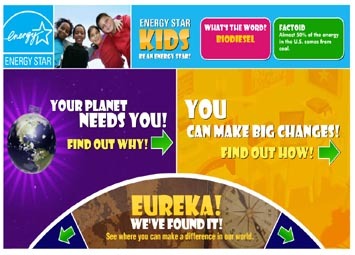
Earth Day Network
The Green Guide – National Geographic
LINKS ON EARTH DAY
Energy Star Kids
Lesson Planet
Celebrating Earth Day with Students
Amazing Earth Facts Game for Classrooms
Earth Day Photos – Submit yours
– Read more in Earth Talk Blog in English & Spanish
Click for More Questions in Kidsfreesouls Earth Talk Blog in English & Spanish
ENGLISH (ARCHIVE) – IV – 2010
ENGLISH (ARCHIVE) – III – 2009
ENGLISH (ARCHIVE) – II-2008
ENGLISH (ARCHIVE)– I
ESPANOL ARCHIVE – 2008
ESPANOL ARCHIVE – 2009
ESPANOL ARCHIVE – 2010
{jathumbnail off}


